The Ultimate Guide To Bearded Dragons
As a pet owner, keeping your child safe and healthy is a big responsibility. One of the most popular types of pets that many people take under their wing is bearded dragon, and their popularity has been on the rise in recent years and for good reason. But, before getting a bearded dragon, you need to know what they are, what to feed them, where to keep them and how long can a bearded dragon go without eating and more.
Bearded dragons are relatively low-maintenance, docile creatures make great companions, and are just all-around fun pets. There are many different variations of this species, and they come in a wide range of colors. If you’re thinking about getting a bearded dragon of your own, then you came to the right place.
This guide will teach you everything you need to know about these amazing creatures. We will cover everything you need to know about keeping a bearded dragon as a pet, like housing, diet, health, and more. Don’t worry, you’ll find some tips and tricks on how to keep your beardie happy!
What Are Bearded Dragons
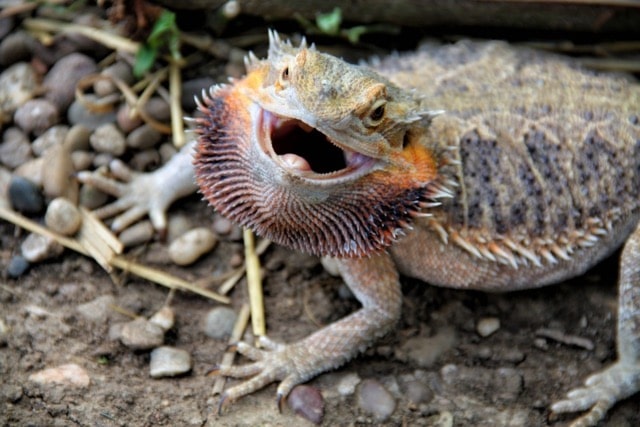
Bearded dragons are native to Australia, grow to be 2-3 feet long and require a hot, dry desert environment to thrive. They get their name from the “beard” of skin that they can puff out around their neck, which is used to intimidate predators or rivals when they are threatened or excited. In captivity, a glass aquarium with a screen top is typically used as a habitat for bearded dragons which they can live in for 10-12 years with proper care.
When choosing a bearded dragon as a pet, it is important to select one that is healthy and has been well-cared for. Bearded dragons sold in pet stores are often wild-caught and may be sick or carry parasites. It is best to purchase a captive-bred lizard from a reputable breeder. The enclosure should be equipped with a basking spot (a heat lamp), hiding spots, and plenty of substrate for digging.
Bearded dragons are generally friendly creatures, and make great pets for people of all ages but are especially popular with children and families. They are not known to be aggressive, and can even be handled with care. These fascinating creatures will be wonderful for those who are looking for something a little different. If you think a bearded dragon is the right pet for you, be sure to do your research and find a reputable breeder. They do not require as much attention as some other pets such as dogs or cats, however, like all pets, they do need some basic care and attention in order to stay healthy and happy.
How To Set Up Bearded Dragons’ Habitat
Before you bring your new pet home, it is important to do some research on how to care for a bearded dragon. This will help you provide the best possible care for your new companion and set you up for success as a reptile owner.
Home & Size
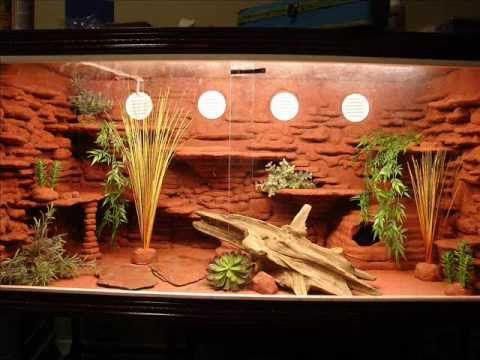
- The first thing you need to do is purchase or build a habitat for your bearded dragon: Bearded dragons are desert animals and require a hot, dry environment. A glass aquarium or terrarium is the best type of enclosure for a bearded dragon, as it allows you to control the temperature and humidity levels inside.
- The minimum size enclosure for a bearded dragon is 10 gallons, but larger is always better. Baby dragons can be kept in smaller enclosures, but will need to be moved to a larger one as they grow. It is also a good idea to have two enclosures; one for daytime use and one for nighttime use. This will allow your dragon to thermoregulate their body temperature more effectively.
Lighting

- Bearded dragons are diurnal animals, meaning they are active during the day and sleep at night. They require UVB lighting in order to synthesize vitamin D3, which is essential for their health.
- There are two types of UVB lighting available; tube lights and compact bulbs: Tube lights are the most effective type of UVB lighting, but they can be more expensive. Compact bulbs are less expensive but still provide adequate UVB lighting for your bearded dragon. The important thing is to make sure that the light you choose emits UVB rays, as not all reptile lights do.
Basking Spot
- Your bearded dragon will also need a basking spot, which can be provided by a heat lamp or ceramic heat emitter: The basking spot should be about 95-105 degrees Fahrenheit during the day, with a cooler side of the enclosure that is about 75-85 degrees. At night, the temperature can drop to about 65-75 degrees. It is important to use a thermometer to monitor the temperature inside the enclosure, as too much or too little heat can be harmful to your bearded dragon.
Humidity Level
- Bearded dragons come from arid environments and do not require high humidity levels. In fact, too much humidity can actually be harmful to them. The humidity level inside the enclosure should be between 30-40%. You can measure the humidity level with a hygrometer, which is available at most pet stores.
Hiding Spot
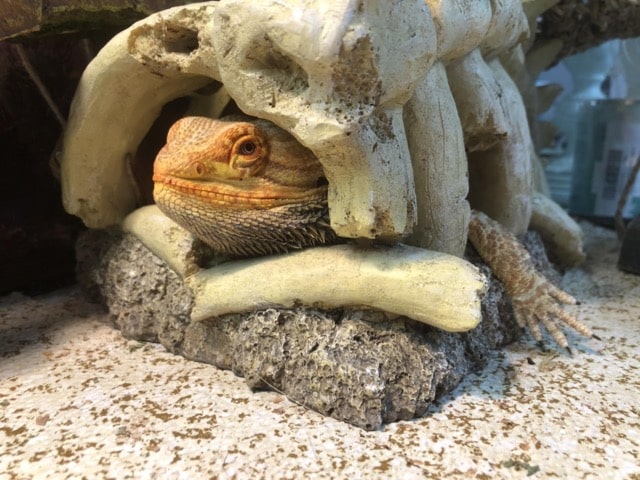
- Bearded dragons also require a hiding spot inside their enclosure. This can be provided by a piece of cardboard box or a commercial reptile hide. The hide should be on the cool side of the enclosure so your dragon can go there to cool down if they get too warm.
Place To Soak
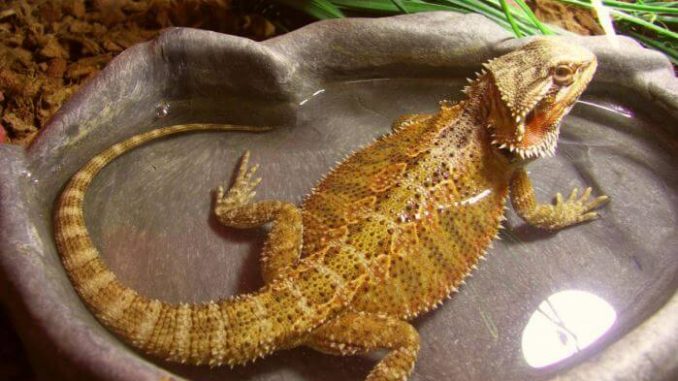
- Your bearded dragon will also need a place to soak. This can be provided by a shallow dish filled with clean, chlorine-free water. The dish should be large enough for your dragon to fit all the way in, but not so deep that they could drown. Your dragon will use this dish to drink from and to soak their body in.
What Do Bearded Dragons Eat
Bearded dragons are omnivores, which means they eat both plants and animals. In the wild, their diet consists of insects, small mammals, and reptiles. In captivity, they can be fed a variety of commercially-available foods, as well as live prey.
There are a variety of things that bearded dragons can eat, but there are a few things that should be avoided. Bearded dragons are omnivores, so they will eat both plants and insects. Some of the best food items to feed your bearded dragon include:
Insects
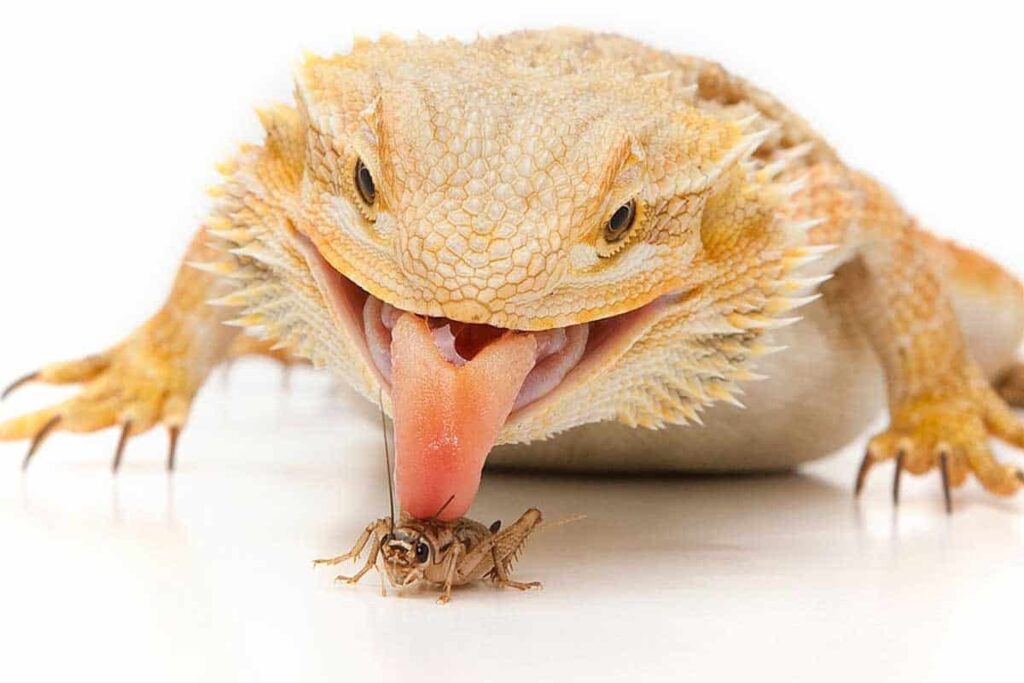
Live prey items should be offered regularly to provide mental stimulation and exercise for your bearded dragon. Suitable live prey items include crickets, mealworms, super-worms, wax-worms, silkworms, roaches, and pinky mice. These should be offered in size appropriate for your bearded dragon – typically no larger than the space between their eyes.
Veggies & Fruits

Fruits and vegetables can be offered either fresh or frozen (thawed). If feeding fresh produce, it is important to wash it thoroughly to remove any pesticide residues. Bearded dragons will typically eat a wide variety of fruits and vegetables, but some favorites include dark leafy greens, carrots, sweet potatoes, squash, apples, grapes, mango, papaya, berries and green beans.
There are a few things that you should avoid feeding your bearded dragon. These include:
- Toxic plants: holly, ivy and oleander.
- Insects with hard shells: beetles, cockroaches.
- Spicy or citrus fruits.
How To Feed A Bearded Dragon
There are a few things to keep in mind when it comes to feeding your bearded dragon. First, you’ll want to make sure that you’re providing a variety of food items. Bearded dragons are omnivores, which means that they enjoy both plant and animal-based foods. This variety will help ensure that your dragon is getting all the nutrients it needs.
Second, you’ll want to be aware of the size of the food items you’re offering. Bearded dragons have very small mouths, so it’s important to offer appropriately sized food items. If you’re not sure what size to offer, always go for smaller rather than larger.
Finally, you’ll want to be aware of how often you should be feeding your bearded dragon. As a general rule of thumb, adult dragons should be fed once or twice a day, while juveniles should be fed more frequently (3-5 times per day). Of course, every dragon is different, so pay attention to your individual dragon’s appetite and adjust accordingly.
How Long Can A Bearded Dragon Go Without Eating
A wild bearded dragon can go without food for several months, but will generally start to become weak and unhealthy after about two weeks.
If you’re a bearded dragon owner, you’ve probably wondered how long your pet can go without food. While it’s true that these reptiles are native to arid climates and can therefore survive periods of time without food, you shouldn’t test this out on your pet.
A healthy bearded dragon should be eating regularly. That being said, if for some reason your dragon does stop eating, they can survive for several months without food. However, this is not ideal and can lead to health problems down the road. If your dragon is not eating, make sure to provide them with plenty of water so they stay hydrated.
Why My Bearded Dragon Not Eating
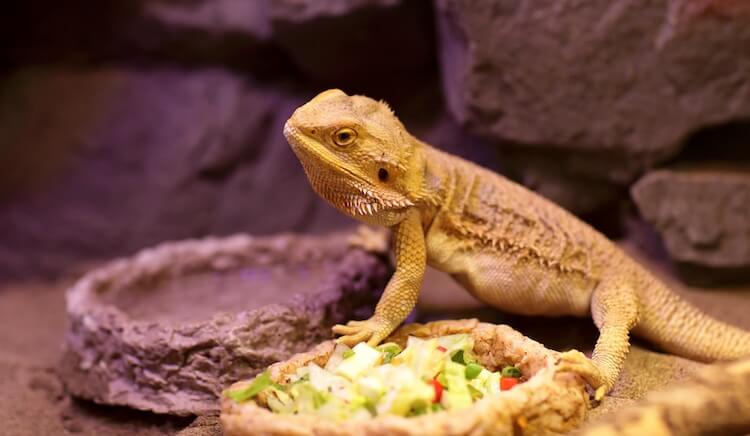
If your bearded dragon isn’t eating, it could be a sign of illness. Bearded dragons are prone to a number of different health problems, so it’s important to take them to the vet if they show any signs of illness. It could be a sign of one of the following health problems:
Inadequate Diet
Bearded dragons need a diet that is high in protein and low in fat. If their diet is inadequate, they may stop eating.
Impaction
When bearded dragons eat sand or other substrates, they can develop impactions. Impactions block the intestine and prevent food from being digested properly. This can lead to weight loss and anorexia.
Infection
Bearded dragons can develop infections in their intestines, which can lead to anorexia. Infections can be caused by bacteria, viruses, or parasites.
Kidney disease
Kidney disease is a common health problem in bearded dragons. It can cause weight loss and anorexia.
Conclusion
Bearded dragons are amazing creatures that make great pets. It is important to monitor your bearded dragon’s food intake and make sure they are eating enough. If you notice that your bearded dragon is not eating as much as usual, it is best to consult with a veterinarian to determine the cause. In some cases, a decrease in appetite may be due to an underlying health condition. If your bearded dragon is healthy and just not as interested in food, you can try offering different types of foods or hand-feeding them to encourage them to eat.
We would love to hear from you if you have any questions or comments about bearded dragons. Please feel free to leave a comment below or send us an email. Hopefully this guide has helped you in your journey to becoming a bearded dragon owner!
